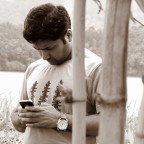Journey to Ahmadabad (Gujarat) and Prathabgar (Rajasthan)
(Aug 08 – Aug 12)
Ahmadabad is still Ahmad-abad
It was with great apprehension that I landed in the airport. The structure had been recently innovated, spotting an interesting fountain besides other facilities. I could not blame the security officer who asked what a Kerala-born Hindi-speaking ‘M-class’ passenger from Dubai was doing in the North-western State of India? It was an unusual combination, I agreed.
Human interventions can change, and has changed, quite many things in the political and geographical landscape of a region. As time passes by, various new tendencies take shape and ways of communities’ thinking of one another changes. Psychological discontent and discord of decades fume between communities and they erupt into physical forms. And some put on the leadership mantle, smelling the air of disunity among the communities.
Gujarat has undergone tremendous social and infrastructural changes. Its laborious and entrepreneurial lot has steadily integrated into the new world, accepting the challenges from both home and abroad.
While parts of present-day Gujarat is said to have suffered large-scale attacks from various Central Asian rulers in the past, starting from Sultan Mahmood Gazni, the land has also won the love and consideration of many kings of those times. Aurangazeb, the great Mughal emperor, born in the Gujarati city of Dahod, wrote to his son, then governor of the locality, “My son of exalted rank, the town of Dohad is the birthplace of this sinner. Please consider a regard for the inhabitants of that town as incumbent on you. (A history of Gujarat: Mughal period from 1573 to 1758, by Manekshah Commissariat)
The ‘M-class’, name given to the Muslims here, is and has always been a majority in this land. And the lack of numbers means a lot of blunders in a democratic form of governance. The community accounts for only hardly seven per cent of the population. However just as the post-independent India proudly celebrates its republic day in the Red Fort monument in Delhi, both of which are Muslim contributions, so is the largest and most developed city in Gujarat still known in the same name as established by the predecessor Muslim rulers. The ruling extreme right-wing government has refrained till date from rechristening ‘Ahmed-abad’ with a Hindu name for reasons which go unexplained.
Miracles could unfold anywhere. Human heart, perhaps, is not always in his control.
Hotel Ashirvad
As the car moved from Gujarat to Rajasthan through the thick of the night, my eyes earnestly surveyed both the sides of the road looking for a minaret. Morning was approaching in few hours and I grew restless for the obligatory prayers. Neither the driver nor my co-travelers had any definite idea where and when we would find a suitable place to place the forehead. While I had no choice but to embrace patiently the trials in this journey, I did not give up my hope in the miracles of the Holy Month I was going through.
Finally, we stopped by a hotel. It was 330 in the morning. The Rajasthan border was few meters ahead. The youth at the cashier wore a skull cap although pictures of several deities hung on the wall. Time could not afford me any hesitation or procrastination. It was now or never. I went to him straight and submitted my plea, shaking his hands: Namaz padna hai. Without saying a word, he took me to the store area of the hotel and laid for me the rug. That was my most conscious prayer during the Holy Month. For the first time, I realized the social importance of religious symbols. Had he not worn the cap, I would not have the courage to ask for a prayer room at that part of the night.
After prayer, I looked back at the name of the signboard which read, Hotel Ashirvad. A betting name for the outlet. Blessed by all means. It started to drizzle slightly after we began the journey from that point.
The Masjid for a Royal Love
The drizzle continued as we entered the border with Rajasthan. Mountain ranges covered the road from both sides. The fragrance from eucalyptus trees teased my senses.
When morning arrived, I was in rural part of the State heading to Prathabgar, a countryside township blessed with beautiful views all around.
On the way, I happened to see men and women walking steadily carrying odd-colored flags. I was told they were the Ramdev pilgrims who walked on foot for about ten days to reach their destination.
Hindu women here, who happened to be daughter-in laws of the house, cover their faces till they become mother-in laws themselves.
En route we had an incredibly spicy breakfast, consisting of samosas and chilies.
My Bohri hosts shared all they could about their culture and lifestyle in the most hospitable manner. There is a strong sense of unity among the community members, both in the town and around the world. The fraternity provides both religious and worldly framework for its subscribers. Certain Prophetic practices are strictly adhered to, especially those related to dining.
Members sit on the carpeted floor in a circle in the posture of sitting for prayer. A plastic sheet is first laid upon which a carrier stand is put. A huge plate is put and sweet is first served. Before eating from the lump of sweet, one member extends a small packet of salt for each member to take a pinch. The salt-pinch is said to ward off at least 72 sicknesses. After eating the salt and sweet dish, mutton curry is put in a vessel at the center. The bread is broken by the member and each piece is given to others. Nevertheless, the idea is to share the food from the same vessel and avoid any wastage of food.
Diversity of human cultural and religious experience is phenomenal sign of GOD.
I was shown around Prathabgar on a bike. Among the strange things I saw was a Hindu death procession in which community members beat the drum and chant as if like an announcement.
Bhai masjid
It is said that the then Hindu king liked a Muslim girl in this village. When asked what she wanted to win her heart, she demanded to make for her something which her entire villagers could see. The wish was fulfilled.
Prathabgar also has wonderful Soya bean plantation around it. The plant is the only source of income for the poor farmers. I happened to visit a family who lived on the farmhouse and met the little boy there.
I also had the opportunity to go to Galiakot, which hosts the pilgrimage city of Tahirabad around the mausoleum of Sayyid Fakhri Ashaheed, the famous Bohra leader and saint. The mausoleum was magnificently built, especially its white dome. There was a lavish community center too for the Bohra members.
In the corner of the mausoleum, evil-affected women come and wail to ward off the spirit. The infection is supposed to be treated by itself. They come out with the incense sticks and stick it on a tree outside. Then they encircle it as part of the ritual. Most of the women are from low-caste communities.
I got introduced to Ali bhai, a tailor by profession and very helpful by nature, at Prathapgar. In the course of conversation, he asked if I was ‘Sayyid, Mirza, Pathan or Shaykh’. I replied none. I was just a believer. North Indian Muslim mindset is still ancient, however justifiable its historic context may be. They badly need leadership on three levels – political, educational and religious – to overcome the ghost of Mughal times.
The four day journey ended on a happy note. Spicy samosas. Marvelous mountains. Hearty hosts. Refreshing rain. Breathtaking breeze. Exhilarating experiences. The only way to be cool during travel is to embrace patiently any trials we face during the journey. Loss of articles is only one of them.
On the night of return, TV channels flashed headlines warning about possible terror attacks. By the grace of God, there were no such fireworks.



